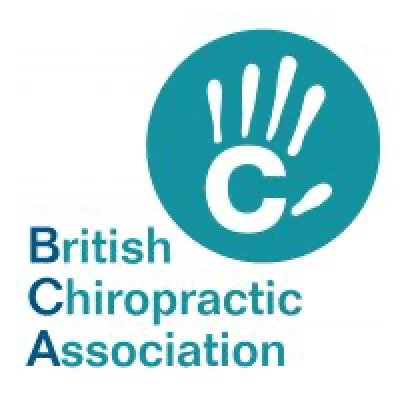The power of nasal breathing and the diaphragm!
Have you ever considered how you breath?
It wasn’t until I read James Nestor’s book ‘Breath’ that I realised how we breath plays such a vital role in our physical health (especially nasal breathing).This really was a thought pro-founding book and a highly recommended read if you haven’t already read it.
In his book James exposes himself to an experiment. He spends 10 days mouth breathing by plugging his nose and then the next 10 days just nasal breathing by taping up his mouth. Before and after each stage of the experiment he recorded a series of tests. These included; blood gases, inflammatory markers, hormone levels, blood pressure, heart rate, lung function and many more measurements. The results were astonishing. During and after the period of mouth breathing he felt terrible. He had an awful headache, he couldn’t sleep and suffered sleep apnea (where your oxygen levels drop dangerously low at night, this can lead to heart failure). He was suffering with memory problems and depression, he had started snoring and his blood pressure and pulse had significantly risen. All these signs suggested his body was in a state of stress.
Just 3 days into his period of nasal breathing, he was starting to feel so much better. He was no longer snoring or suffering sleep apnea and all of his vital measures such as blood pressure and heart rate had started to significantly improve.
So what are the advantages of nasal breathing?
Breathing is something we do automatically. However it is worth paying attention to how you breathe. Do you spend most of your time breathing through your mouth or through your nose?
The role of our nose is to warm, purify and slow down the air that we breathe in. Our throats then guides the air into our lungs. Here a network of sacs remove the oxygen from the air that you breathe in and transfer it into our blood system.
Our noses therefore play a really important role in clearing the air that we breathe by filtering out particles and pollutants, heating it and moistening it to allow easier absorption. Any debri collected in the nose moves down into the stomach, where it is sterilised by your stomach acid and sent out of your body. Warmer, cleaner, slower and pressurised air inhaled through the nose allows the lungs to extract more oxygen with each breath. This is why nasal breathing is far more healthy than mouth breathing.
Breathing and our autonomic system.
Nasal breathing can have a powerful influence on our heart rate, digestion, moods and pain levels. This is because it affects our autonomic nervous system. The automatic nervous system is spilt into two systems:
Parasympathetic nervous system which stimulates relaxation. We often call this being in your ‘rest and digest’, the feeling you may experience after a relaxing massage or warm bath. Where your adrenaline levels are lower, your muscles are relaxed and your heart rate lowers.
Sympathetic nervous system has an opposite role and stimulates signals to our organs to get ready for action. Our adrenaline levels, heart rate and muscle tone increase keeping us alert.
This is often termed ‘ fight or flight’ which you may experience whilst waiting for an exam to start, if you are in pain, concerned about a meeting your boss has called or being chased by a scary dog!
Interestingly our lungs are covered with nerves that affect our autonomic nervous system. Many of the nerves connecting to our parasympathetic nervous system are situated in our lower lung lobes. The deeper, slower and more softly we breathe in and the longer we exhale, the more the parasympathetic nerves will be stimulated bringing us into our rest and digest. Nasal breathing will help this.
Are bodies are designed to stay in a heightened sympathetic state but only for short periods of time and on occasions. It can take just a split second of stress to switch on this system. Returning back to a state of rest and digest can take an hour or more. Symptoms of being in a prolonged periods of fight or flight may present as insomnia, digestive issues, pain, sexual disturbances, skin problems, breathing issues, panic attacks, feeling light headed, palpitations, anxiety and other mood changes such as irritability or withdrawal.
Practicing breathing in and out slowly and quietly through your nose is an important way of helping you return into your rest and digest and hence can help settle the fight and flight symptoms above.
Nasal breathing and pain
Commonly patients with pain find it difficult to perform specific movements. For example patients with back pain may avoid or have difficulty bending forwards to pick something up off the floor or tie their shoe laces. Interestingly one of the first tissues that has to lengthen to allow you to bend forwards is your diaphragm. When your diaphragm lengthens, it allows your ribs to move downwards and inwards towards your spine, your spinal muscles can then lengthen allowing your spine to bend.
Patients with back pain who anticipate pain when they bend forwards to touch their toes often subconsciously hold their breath. Holding your breath when bending actually does the complete opposite to what the body would like to do to help you bend. The diaphragm can’t lengthen, which immediately impacts rib cage movement and the ability of the spinal muscles to lengthen. Instead they attempt to shorten which enhances the painful sensation. Additionally, air can’t get to the bottoms of the lungs triggering more sympathetic nerve activity, further increasing muscle tone.
The best way to help your diaphragm lengthen and your muscles to relax when bending and moving is to nasal breath and specifically breathe out slowly through your nose when performing your challenging or painful movement such as bending.
Nasal breathing practice.
I often get my patients who are struggling with pain, stiffness or have sympathetic nervous system symptoms to pay attention to their breathing throughout the day and take part in breathing exercises. Just recognising whether you are breathing through your nose and slowing the breath down as you breathe in and out is a magical tip for helping pain, improving movement, sleep and other symptoms of sympathetic heightened activity.
Here is an exercise to try yourself:
Close your mouth, place your tongue lightly on the roof of your mouth, lips together, teeth slightly apart.
Place your hands on your lower rib cage/ belly.
Take a slow breath in through your nose and notice your hands lift a little as the lower rib cage rises.
At the top of your breath, exhale as slowly as you can through your nose. Notice your hands on your ribs lower as the ribs drop down. Exhale to the very, very end of the breath.
At the end of the exhale, slowly control the air back in through your nose as you breath back in.
Repeat for about 4-5 breaths regularly throughout the day.
If you are unable to breath through your nose or have nasal obstructions, then perform the above by mouth breathing. Concentrate on slowing the breath down as you breath in and out.
If you would like to learn more about diaphragmatic breathing or are suffering with symptoms then do get in touch so that we can help you.
Read onto our next article The Mummy MOT by Women’s Health Physiotherapist Louise.



























